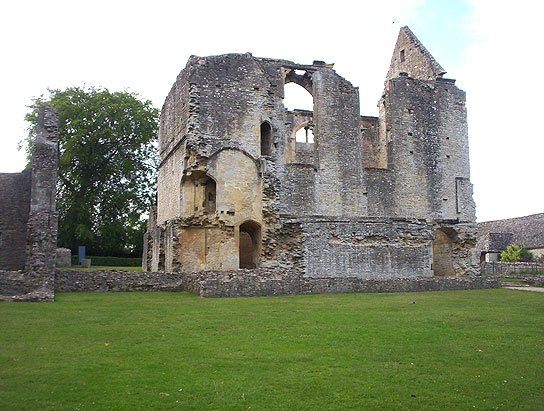
English Heritage.
Minster Lovell Hall is, or was, a 15th century riverside manor house. The ruins of a fine hall and corner tower can be seen, also a complete dovecote.
The ruins are quite interesting and worth a look if you are passing that way. The setting is pleasant and peaceful.
I found that finding the Hall was more troublesome than it should have been, because of vague or absent signage. First find the village, then find the church. Park up and look behind the church. The signs directing you to the dovecote are also rather vague, but if you look for a circular building with a pointy roof, you should be able to spot it in the middle distance.
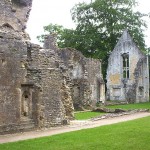
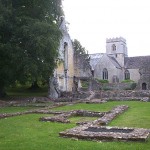
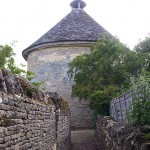
Category: South-east
Location
Great Coxwell Barn, Oxfordshire
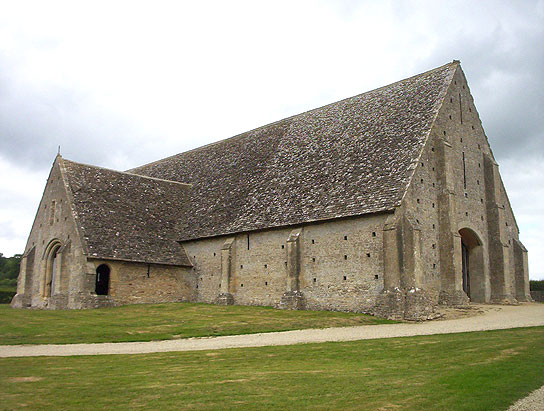
National Trust.
Great Coxwell Barn was built in the mid thirteenth century for the Cistercian abbey of Beaulieu. 152 feet long, it has buttressed walls of Cotswold stone, and a soaring stone-tiled roof with its rafters supported on slim oak timbers. Projecting porches either side of the barn house the original doors.
This is an impressive building and worth seeking out if you are in the area. The visit won’t detain you long, however.
Buscot Park, Oxfordshire
National Trust.
The house is a late eighteenth-century Neo-classical building. The pavilions to each side, and the imposing flight of steps leading up to the entrance front, were added in the 1930’s. The interiors are lavish, with extravagant chandeliers, inlaid and painted Regency and Empire furniture, and mahogany doors. Many noteworthy paintings hang in the house. The more prized contents form part of the Faringdon Collection. A cycle of Burne-Jones paintings, Legend of the Briar Rose, runs around the walls of the saloon.
Outside are extensive gardens and grounds. The entrance, ticket office, walled garden and tea-room lie to the west of the house, and the Pleasure Grounds, with the larger lake and various garden features of interest lie to the east. There is a notable water garden with features leading down to the lake. Frescoes can be found in the archway leading to the (private) outdoor swimming pool, and in the tea-room.
The house interior and Faringdon Collection are well worth seeing, and the gardens provide plenty of scope for sightseeing and walking.
Opening days and dates are somewhat restricted.
Burghley House, Cambs
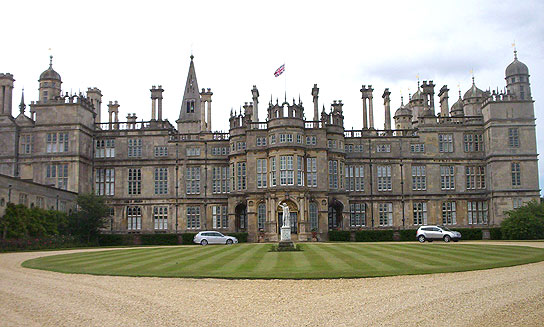 Regarded by many as the finest Elizabethan House in England, Burghley House was built in the 16th Century by William Cecil, the first Lord Burghley, Queen Elizabeth’s Lord High Treasurer. This was one of the Elizabethan “prodigy houses”. The main part of the House has 35 major rooms on the ground and first floors. There are more than 80 lesser rooms and numerous halls, corridors, bathrooms and service areas. The lead roof extends to three quarters of an acre. The historic parkland was laid out by Capability Brown. Now there are some modern visitor attractions in the grounds, including the Gardens of Surprise.
Regarded by many as the finest Elizabethan House in England, Burghley House was built in the 16th Century by William Cecil, the first Lord Burghley, Queen Elizabeth’s Lord High Treasurer. This was one of the Elizabethan “prodigy houses”. The main part of the House has 35 major rooms on the ground and first floors. There are more than 80 lesser rooms and numerous halls, corridors, bathrooms and service areas. The lead roof extends to three quarters of an acre. The historic parkland was laid out by Capability Brown. Now there are some modern visitor attractions in the grounds, including the Gardens of Surprise.
When one arrives in the car park, through the trees one has a quite impressive view of the house. However this is just the stables and the side of the service wing! The house itself as befits one of the Elizabethan “prodigy houses” is very big, on 4 floors, with scores of windows, turrets, chimneys, spires etc. It’s very impressive. Inside there is lots to see, with approx 18 principal rooms on the first floor all equipped with paintings, furniture and a cornucopia of treasures. There are also exhibitions of treasures by the ticket office which are worth a look.
Outside there is a park, and gardens. The “Gardens of Surprise” has quirky water fountains and other features (great for children). I particularly liked the Fire/Air/Water/Earth sculptures where one presses a button and they change shape or (for Fire) emit smoke. Next to that is the Sculpture garden – a large wooded area with exhibits of modern sculpture dispersed through it. The lake had orange things floating in it which I’m almost sure were sculptures. For refreshments, the Orangery restaurant looked expensive but the garden cafe is cheaper.
There is much to see and do at Burghley, so that one could make it an all-day visit.
Access to the house is via the main street of the old town of Stamford, where the Classical and Georgian townscape has survived almost unscathed. (Visited 17/07/11)
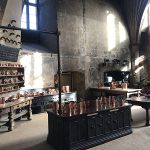
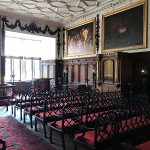
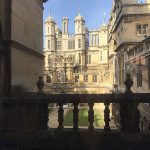
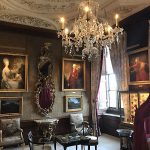
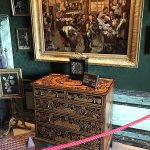
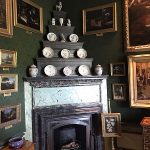
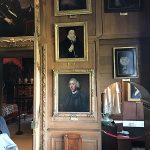
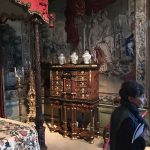
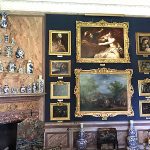
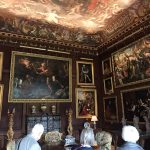

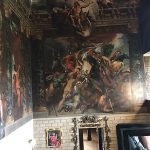
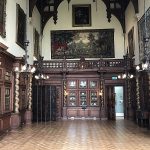
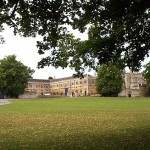
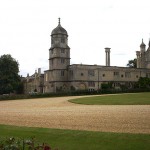
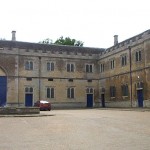
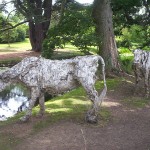
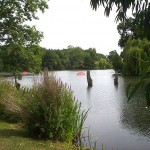
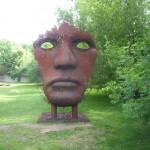
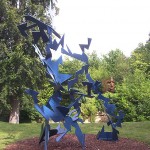
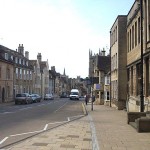
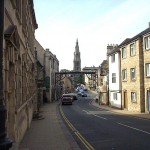
The National Museum of Computing, Bletchley, Bucks
The National Museum of Computing is dedicated to showing the development of computing in its broadest sense, from the pioneering wartime efforts that resulted in Colossus, to the products and systems we use today. Exhibits include the Colossus replica, and some big-iron commercial computers e.g Elliot 803B, ICL 2966, that formerly filled the computer rooms of large companies from the 1960s to the 1980s, and a multitude of personal computers and calculators, including Sinclair, BBC Micro, and Amstrad.
There should be something here to interest everyone who has used computers. Older visitors can go around exclaiming “I used to use one of those!” while younger ones can try out the computer games on the personal computers.
TNMOC is on the same site as Bletchley Park, in block H. Please note that TNMOC now levies an admission charge of £5, and if you only want to visit TNMOC, you don’t need to pay the Bletchley Park admission as well. Currently TNMOC has restricted opening hours.
Bletchley Park, Bucks
The WWII code-breaking centre at Bletchley Park was a well-kept secret for years. When the fact of its existence was de-classified, the buildings on the site became the object of attention, and eventually a Trust was set up to preserve the more noteworthy buildings, establish a museum of codebreaking and explain the significance of what went on at the site. Here, the German Enigma code was broken. During the war, thousands of people were employed here, and there was cutting-edge work in developing machine aids for decryption. The electromechanical “Bombe” was invented to help crack Enigma and the electronic computer “Colossus” was invented to help crack the more difficult “Tunny” teleprinter code.
If you visit, there is a lot to see, and one day might not be enough. Guided tours of the various buildings are available, taking in the Mansion, (an opulent if rather mongrel Edwardian mansion), various brick out-buildings of the mansion, some near-indestructible bomb-proofed concrete huts, and some decaying wooden huts with famous numbers, as well as Bombe and Colossus reconstructions.
Then there is the Museum of Codebreaking, where you can try to get your head around how decrypting Enigma actually worked, and other huts with displays about spies, daily life at Bletchley Park during the war, and so forth. Did you know that British military planes used to carry a pigeon so that the bird could carry a message back if the plane came down? I didn’t.
In addition there are other historic displays that share the Bletchley Park site, from TNMOC – the National Museum of Computing, the cine projector museum with mini cinema and newsreel shows, the display of ship models, and others. These ‘other’ groups have their own opening times – check websites.
There is also a series of lectures, which explore war and codebreaking topics in some depth.
Also, there is a miscellany of Events, seemingly ranging from parades of military vehicles to almost anything else.
If you are interested in history, war, or codebreaking, you should find something to interest you here.
Bletchley Park is open daily, but this does not apply to associates such as TNMOC, so check before travelling. Parts of the mansion may be in use for commercial activities on any day except Sundays.
Bletchley Park admission is not expensive considering the amount to be seen, and permits repeated re-admission for 12 months.
Please note that there is a £3 charge for parking in the grounds. Bletchley Park entrance is about 100 yards from Bletchley railway station.
Chenies Manor, Bucks
Parts of Chenies Manor date from the 13th century, but the long wing that provides much of the present accomodation was built in the 15th century. Further alterations were made in later centuries. The building is notable externally for the massive chimneys, with their ornamental cut-brick tops. One whole side of the 15th century wing is windowless and dominated externally by massive chimney breasts. The Parish Church is close by.
The Manor has a series of interesting historic interiors, furnished with period furniture. Outside, there are various sections of garden, including a courtyard garden, kitchen garden, Physic garden (herbs), the White garden and a maze. In the gardens is an interesting well-house.
The Manor seems to be a popular location for film shoots. While I was there a crew was setting up in one of the rooms, and also shooting a scene in the box-hedged part of the garden.
Admission to the house is by guided tour.
Shaw’s Corner, Herts
National Trust.
The house is undistinguished, but is filled with fascinating mementoes of the great Irish dramatist and critic. Apart from the museum room, which shows gems such as the Oscar that Shaw was awarded in 1938 for the screenplay for the film version of Pygmalion, and his membership card for the Cyclists’ Touring Club, the house is still arranged very much as it was in his day. The rear garden is of a considerable size, and contains a curious rotating shed in which Shaw did much of his writing. The trees have grown rather bigger than they were in Shaw’s day, transforming parts of the garden into a small wood.
I enjoyed my visit to the house and garden, and departed much better informed about Shaw than I was when I arrived. Despite its proximity to London and some large towns, the village can only be accessed by some narrow and twisty roads, but the small NT car park can be very busy.
Stowe Landscape Gardens, Bucks.
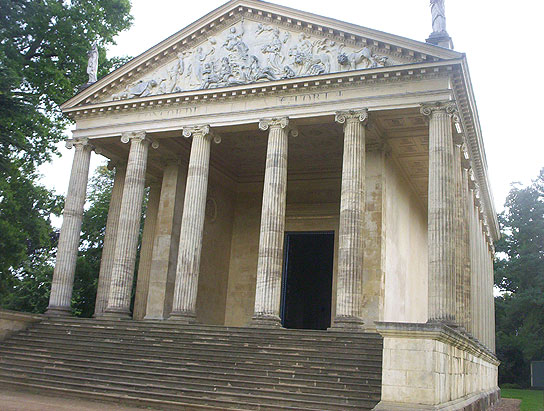
The National Trust acquired the gardens in 1990, and since then have restored over 40 temples and monuments in the Georgian gardens, said to be the most influential landscape gardens in Europe. There are lakes, trees and valleys, with a variety of walks and vistas occupying a wide area. Checking out all the monuments and visiting the furthest reaches of the park can take many hours.
I have visited the park on several occasions and usually find something fresh to enjoy each time. The Park part-surrounds Stowe School, so if you visit in term-time, don’t be surprised to encounter some of the jeunesse dorée at leisure.
Aug 2012 update: A new NT visitor reception (New Inn) opened early 2012 at the opposite end of the Gardens. Road access from Buckingham is now shorter and simpler. There is a 500 metre walk or land-train ride from the New Inn car park to the new garden entrance. The refurbished New Inn visitor reception is worth a visit.
After visiting the Park, you might take up the challenge of visiting some of the outlying monuments. The Corinthian Arch which dominates the usual approach from Buckingham is easy to access – just drive up to it (or walk back from the new visitor centre). The Wolfe Obelisk, 100 ft high, is accessible from the far end of the old NT car park, (MK18 5DQ) a few hundred yards past the Stowe School entrance, as is the small Conduit House, an octagonal pavilion. “Stowe Castle” can be viewed through binoculars if you stand in the right spot near the Gothic Temple, and the back of it can be acccessed by road. (There is now a set of rural industrial units next to it). There are one or two others in outlying positions including the Bourbon Tower, closer to the gardens than the Wolfe Obelisk, but obscured by trees and with no obvious path to it.
The route to the Bourbon Tower (pic. below) starts near the far end of the old NT car park, at the same point as the path to the Wolfe Obelisk. A weathered signpost points towards the Wolfe Obelisk, and, in the opposite direction, to the Bourbon Tower. Walk alongside the private road leading to the Stowe playing fields, and at the T junction cross over it and enter the field ahead containing a small obelisk and the Tower. From this field one also has a clear view of “Stowe Castle”. The tower has a ditch and the remains of a wall surrounding it; the entrance is on the far side. The tower is in poor condition, with former windows blocked up. There is an interesting hole under the outer wall, which leads to a small rectangular stone-lined chamber, possibly an ice-house.
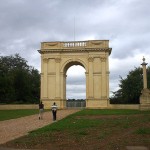
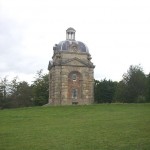
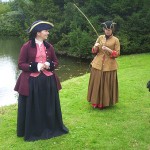
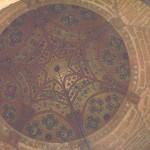
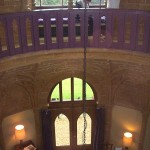
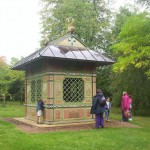
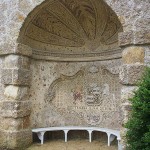
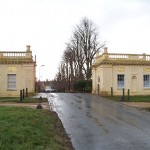
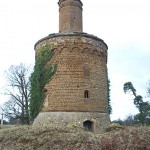
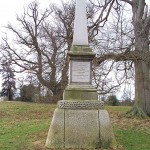
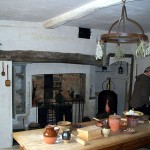
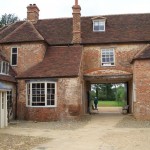
Hughenden Manor, Bucks.
National Trust.
The house, originally built towards the end of the 18th century, was bought by Victorian prime minister and novelist Benjamin Disraeli, who had it radically re-modelled in a Gothic style. The three-storey brick house is surounded by formal gardens, park and woodlands totalling 1500 acres. The west wing of the house was added in 1910. During the second world war, the house was used as a secret intelligence base, where aerial photography of Germany was analysed, and maps made for bombing missions.
Today, the fine gothic-styled ground floor rooms are displayed with rich furnishings and contents, and windows overlooking the garden. Upstairs, the Disraelis’ bedroom has been re-created, and his study is now much as he left it. In the basement and elsewhere are displays about the house’s WWII role. I enjoyed exploring the extensive gardens and park.
Revisited 27 May 2021: The NT have now gained some rooms in the west end of the house, formerly rented out, and turned them into exhibition space for a new exhibition devoted to the WWII mapmaking. At the time of my visit, the basement and upstairs were closed.
